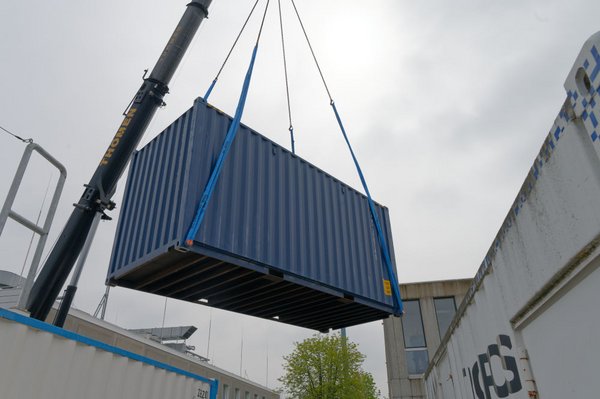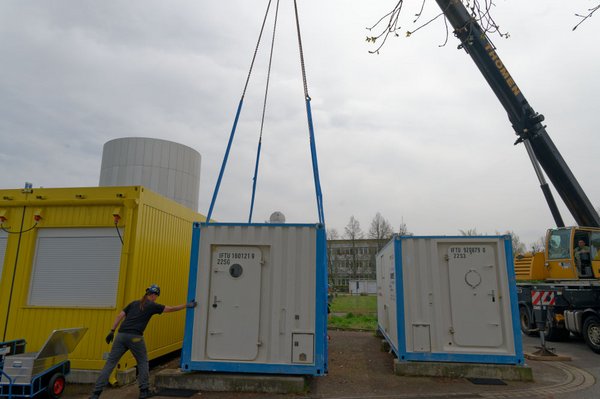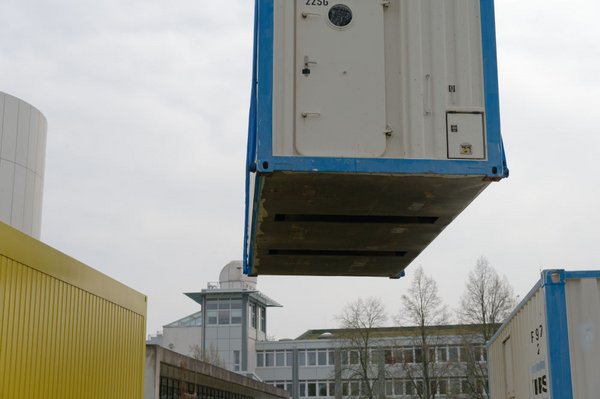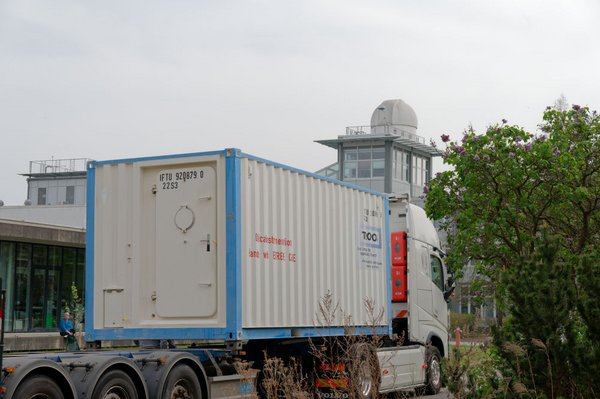Preparations for goSouth-2
Leipzig,
18.04.2025
– Patric Seifert / Tilo Arnhold
Kick-Off for the upcoming field campaign „goSouth-2“
Three containers with remote sensing technology from the LACROS mobile aerosol and cloud remote sensing system left Leipzig on 17 April 2025. From September, they will be used to study clouds at the edge of the Southern Ocean from Invercargill on the southern tip of New Zealand for around two years.
In terms of aerosols, the region at the southern tip of New Zealand's South Island is unique in the world: it is one of the most unspoilt and yet still accessible regions in the world. The clouds here are mainly influenced by marine emissions, as all major anthropogenic emission sources as well as mineral dust or forest fire smoke are absent when the air masses from the south come from Antarctica and the Southern Ocean. On the other hand, there are also episodes with dusty and anthropogenically polluted air when the air masses move over Australia to New Zealand. The south of New Zealand was therefore chosen to investigate these differences in more detail in order to learn more about the clouds in the high latitudes of the southern hemisphere. The clouds over the Southern Ocean in particular differ greatly from the clouds in the Northern Hemisphere due to the significantly cleaner air. These differences have not yet been sufficiently understood and mean that the clouds in this region cannot yet be modelled accurately enough in climate models.
An international consortium led by the Leibniz Institute for Tropospheric Research (TROPOS) will therefore study the clouds in this region for two years.
From 1 September 2025 to 31 March 2027, ground measurements will be carried out in Invercargill in the far south of New Zealand. The campaign is called ‘goSouth-2’ because there was already a first test campaign in 2022 together with the National Institute of Water and Atmospheric Research (NIWA) in New Zealand (details here). Following measurements in Punta Arenas at the southern tip of South America and at the German Antarctic station Neumayer-III, the cloud researchers from Leipzig hope that the extensive measurement campaign in New Zealand will significantly improve their understanding of clouds in the southern hemisphere.
goSouth-2 is the umbrella term for the land-based observations in which several projects are involved:
- CleanCloud: the EU project investigates the interactions between aerosols and clouds (ACI) to improve our understanding of climate dynamics in an ever-changing world. (https://projects.au.dk/cleancloud/cleancloud-project)
- LSC BioSmoke: The Leibniz ScienceCampus ‘Smoke and Bioaerosols in Climate Change’ (LSC BioSmoke) investigates the links between forest fires and climate change. (https://www.leibniz-gemeinschaft.de/forschung/leibniz-wissenschaftscampi/rauch-und-bioaerosole-im-klimawandel)
- In addition, further cooperation projects with Leipzig University and the Universities of Auckland and Canterbury in New Zealand are in the preparatory phase.
The measurements on the ground are to start in good time before the start of an extensive flight campaign: the ‘HALO-South’ mission of the German research aircraft HALO is to take place from September to October 2025 in the Southern Ocean region, mainly south-west and south of Christchurch, New Zealand. The aircraft will be equipped with state-of-the-art instruments to study aerosol and cloud cycles and their effects on the radiative properties of clouds. The Southern Ocean is one of the cloudiest regions on Earth with a high radiative effect of clouds, leading to a strong bias in atmospheric modelling. However, observations have shown that clouds over the Southern Ocean amplify warming in this region.
The ground-based remote sensing measurements are intended to optimally complement the aircraft campaign. Along with the remote sensing devices of the Leipzig Aerosol and Clouds Remote Observations System (LACROS), three in-situ measuring devices will also be used (a filter sampler for ice nuclei samples, a cloud condensation nuclei (CCN) counter and a particle spectrometer (SMPS) for measuring the aerosol size distribution from 5 nanometres to 32 micrometres).
The ground-based remote sensing site will be in Invercargill on the MetService New Zealand site at the southern tip of the South Island of New Zealand. Ideal for characterising the original clean air from Antarctica and the Southern Ocean. Nevertheless, the researchers expect the inflow of air masses from Australia, which are more heavily polluted with aerosol, about 25% of the time. This contrast allows detailed comparisons, as a team from TROPOS and NIWA has already been able to show in an initial analysis of long-term lidar measurements from New Zealand (see here). The aim of goSouth-2 is a detailed contrast study of cloud properties in clean Antarctic air compared to clouds in aerosol-polluted Australian air. The location of the New Zealand Meteorological Service at the edge of the airport is ideal for the ground measurements because meteorological ground observations have already been carried out there for many years and two radiosonde launches (weather balloons) take place every day. The cooperation between TROPOS and MetService New Zealand was decided back in spring 2024, when a delegation from TROPOS and NIWA investigated various possible locations for the goSouth-2 campaign and ultimately decided in favour of the station now selected in Invercargill.
The approximately two-year measurements in Invercargill will be supplemented by ground measurements from Leipzig University: Prof. Heike Kalesse-Los' working group will contribute to the campaign with a 94 GHz cloud radar by collecting remote sensing data at the Tāwhaki National Aerospace Centre on the eastern side of the South Island of New Zealand. The LIMRAD-94 cloud radar from Leipzig University will be shipped to New Zealand in the TROPOS containers and then transported from Invercargill to Tāwhaki. The station in Tāwhaki will also be support by equipment (Doppler Lidar, Ceilometer, MRR-Pro) from the University of Canterbury, Christchurch.
Patric Seifert / Tilo Arnhold
Leipzig, 17.04.25




